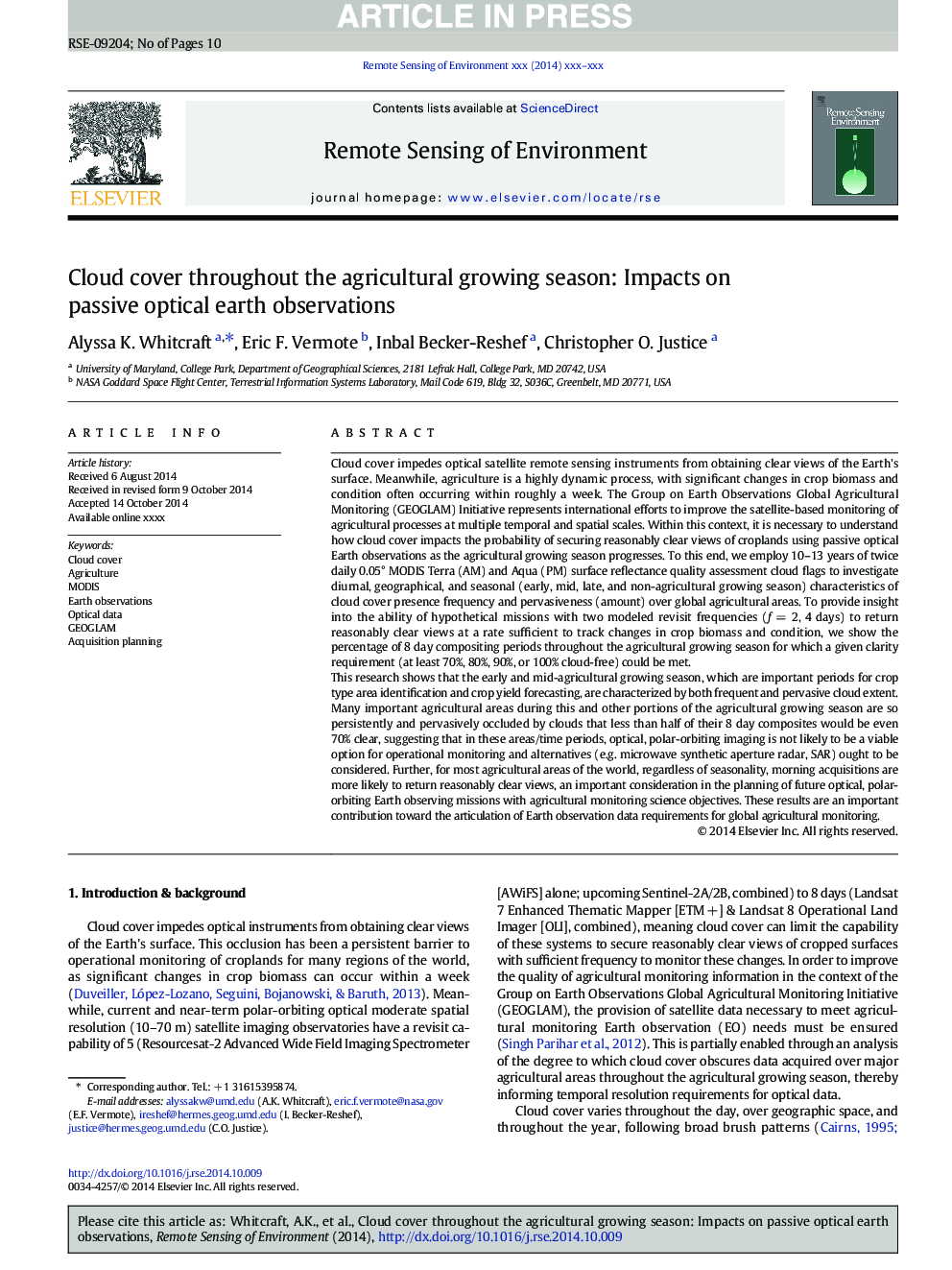| Article ID | Journal | Published Year | Pages | File Type |
|---|---|---|---|---|
| 6346557 | Remote Sensing of Environment | 2015 | 10 Pages |
Abstract
This research shows that the early and mid-agricultural growing season, which are important periods for crop type area identification and crop yield forecasting, are characterized by both frequent and pervasive cloud extent. Many important agricultural areas during this and other portions of the agricultural growing season are so persistently and pervasively occluded by clouds that less than half of their 8Â day composites would be even 70% clear, suggesting that in these areas/time periods, optical, polar-orbiting imaging is not likely to be a viable option for operational monitoring and alternatives (e.g. microwave synthetic aperture radar, SAR) ought to be considered. Further, for most agricultural areas of the world, regardless of seasonality, morning acquisitions are more likely to return reasonably clear views, an important consideration in the planning of future optical, polar-orbiting Earth observing missions with agricultural monitoring science objectives. These results are an important contribution toward the articulation of Earth observation data requirements for global agricultural monitoring.
Related Topics
Physical Sciences and Engineering
Earth and Planetary Sciences
Computers in Earth Sciences
Authors
Alyssa K. Whitcraft, Eric F. Vermote, Inbal Becker-Reshef, Christopher O. Justice,
